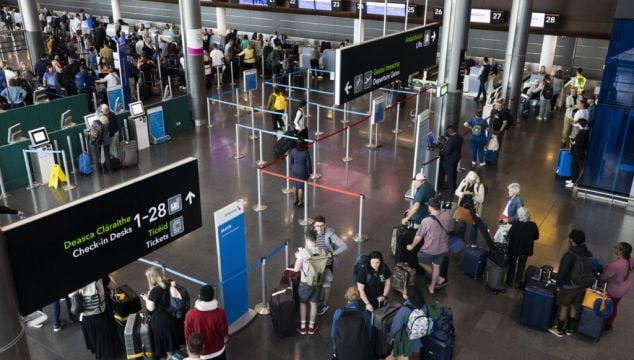The Irish Aviation Authority (IAA) has reported a “statistically significant” increase in the number of incidents involving difficult and unruly passengers on flights operated by Irish air carriers last year.
The IAA’s latest annual safety performance review reveals there was a 43 per cent increase in reported incidents during 2023 where the behaviour of passengers on board aircraft posed a safety risk.
A total of 426 incidents relating to difficult and unruly passengers were reported to the IAA last year – up from 298 in 2022.
The IAA said it was the second most common event type reported during 2023 after bird strikes.
The aviation watchdog said it was currently working with Irish stakeholders including airlines, airports, An Garda Síochána and security services “to facilitate a collaborative approach to address this problem.”
The IAA noted that the European Union Aviation Safety Agency had warned early last year that difficult and unruly passengers represented an emerging risk during the summer of 2023.
“It appears to have continued to be an issue throughout 2023,” the IAA observed.
It claimed the issue of difficult and unruly passengers came to the fore in 2022 after being only the 7th most common reported event in pre-Covid years.
The figures are published after Ryanair chief executive, Michael O’Leary, recently called for airplane passengers to be restricted to two drinks at airports.
Mr O’Leary claimed the introduction of alcohol limits at airports would help to tackle the growing problem of unruly passengers on flights.
He expressed concern that violent outbursts were now weekly occurrences with cabin crew and other travellers being targeted by drunken passengers.
The Ryanair boss said earlier this week that he would be prepared to introduce a two-drink limit on his aircraft if the same rule was applied at airport bars.
The latest IAA figures show a total of 1,544 bird strikes on Irish aircraft were recorded last year – up over 200 incidents or 15 per cent on 2022 levels.
The third most common type of event reported were windshear or microburst incidents which arise from sudden changes in wind speeds.
In 2023, the number of such incidents was down 5 per cent to 228.
A total of 186 incidents where injuries were suffered on board aircraft last year were also recorded.
The level of incidents of aircraft being interfered with by lasers was unchanged at 186.
The IAA review also revealed that there were 64 incidents on flights operated by Irish air carriers being struck by lightning during 2023 – up from 35 the previous year.
The latest figures show there were three non-fatal accidents involving Irish aircraft last year as well as eight serious incidents.
Two of the three accidents were categorised as “abnormal runway contact”, while the other was classified as “loss of control on the ground.”
The serious incidents included one near mid-air collision which occurred outside Ireland, a loss of control inflight and a runway excursion.
Overall, the number of safety occurrences reported on Irish aircraft last year rose by almost 15 per cent to 9,451 in tandem with a similar increase in overall aviation traffic levels.
None of the incidents were categorised as high risk, while all reports relating to unruly passengers were deemed low risk.
The IAA welcomed an increase in the occurrence reporting rate as a sign that aircraft operators were continuing to deliver “a maturing reporting culture.”
However, it also stressed that the chances of a passenger being on a flight of an Irish air carrier that experienced a safety occurrence remained “very low” as there were over 727,500 such flights during 2023.
“This means that over 98 per cent of these flights passed off without any safety occurrence that required reporting to the IAA and over 99.99 per cent of these flights passed off without being involved in an accident or serious incident,” the IAA stated.
It also highlighted that the vast majority of occurrence reports last year were classified as “low risk” following a safety analysis.
The IAA welcomed the absence of any fatalities with operations by Irish commercial aircraft last year.
It claimed an analysis of safety occurrences reported over the last six years had shown the main issues had remained the same over the period.
While international aviation authorities had identified various categories of incidents as the main contributors to accidents with high fatalities including loss of control inflight, mid-air collisions and runway incursions, the IAA said there had been no such accidents involving Irish aircraft in such categories over the past five years.
However, it said other categories outside key risk areas that warranted attention included the management of difficult and unruly passengers, adherence to aircraft loading procedures and the danger posed by lithium batteries in cargo or cabin baggage.
“The unique fire hazard characteristics of lithium-ion batteries and their proliferation in commonly used electronic devices pose a significant safety risk that must be effectively mitigated and managed,” the IAA said.







